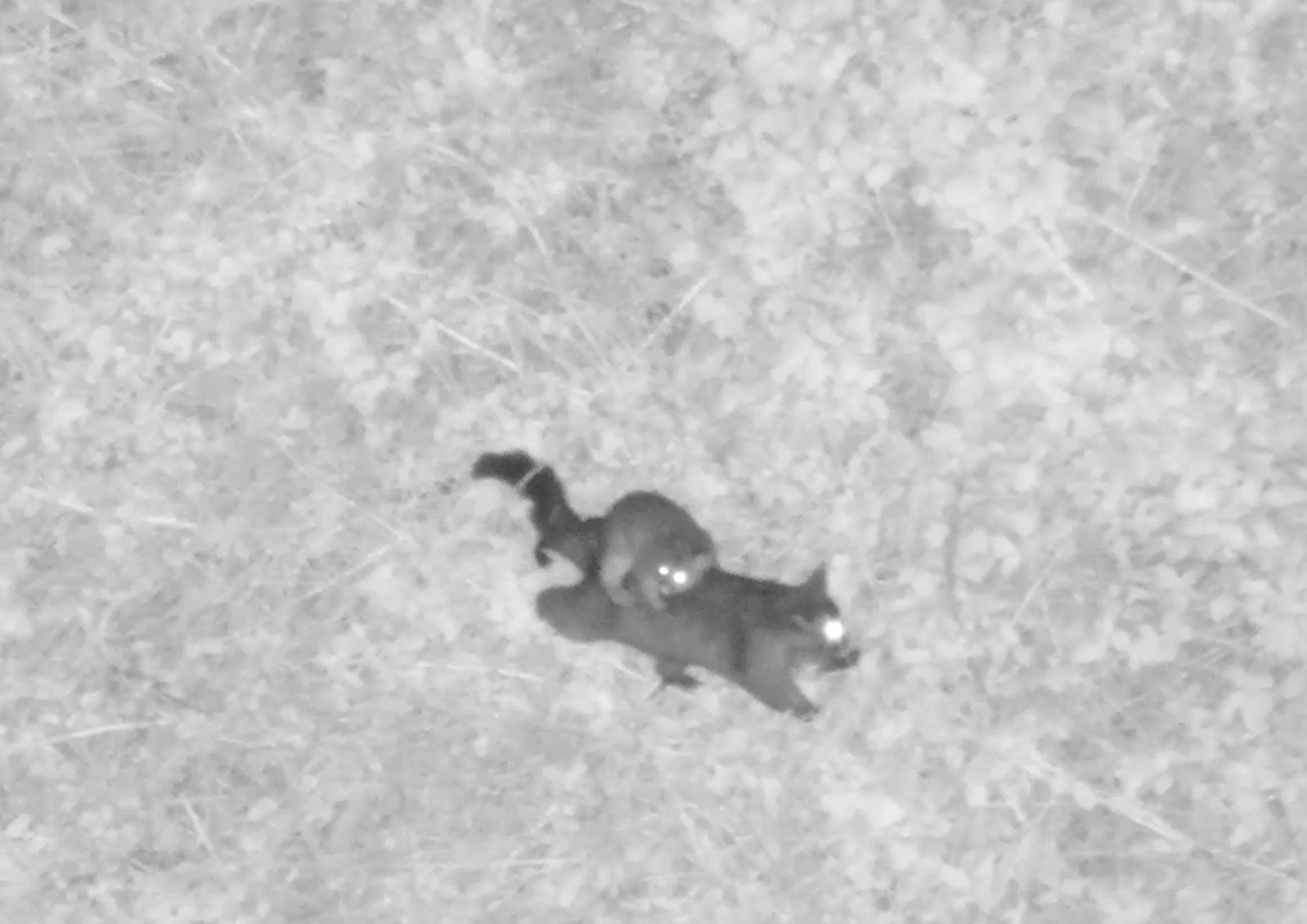
The Otago farm is the site of a new initiative in the fight against bovine tuberculosis, where drone and imaging technology are being tested to ascertain how useful they can be against possums.
The animals spread bovine Tb, a disease which can devastate individual farms and, if it became more widespread, could cause severe economic harm to the dairy and beef sectors.
Otago is home to five infected herds and 22% of land nationwide has been assessed as potentially having enough possums living on it to spread Tb further afield.
Much of that is large-scale tussock landscapes, hard to search effectively and often in remote, inhospitable places.
A team of contractors, Interpine Pilots, have taken to the skies with drones armed with thermal imaging technology, seeking out possums burrowed within tussock land at Rocklands.
The technology, which was outlined to Minister for Biosecurity Andrew Hoggard yesterday, is being tested on a 2000ha area, over five nights.
Should the drones find possums, their positions will be logged by GPS and possible eradication methods can then be planned.
To break the disease-spreading cycle, densities of the pest have to be low — one or two animals every 10ha. Interpine’s Chris Scoggins said on the first night of the trial their machines had detected sheep, cows, deer, hedgehogs, rabbits, hares and pigs but were yet to find a possum.
Assuming the animals were found, AI software would be "trained" to identify and log possums automatically, rather than humans having to confirm what the cameras had seen.

If farmers kept their stock on their own land, the impact of bovine Tb could be limited, the chairwoman of the Otago Ospri farmer committee, Vanessa Hore, said.
However, presence of the disease prevented transport or sale of stock and could have a massive impact on a farmer.
"It’s a very real biosecurity risk that farmers have to deal with. One thing that we are noticing is the older generation has dealt with it — the majority of farmers were infected back when they had 1800 infected farmers nationally, whereas now we’re down to, I think we’re currently 15.
"The scale is completely different. Farmers have never experienced it, don’t understand it, don’t know anything about it.
"Part of our role as a farmer committee is talking to our networks and educating them on what Tb is."
Apart from spreading disease, possums also damaged farm trees and loved eating brassica crops, so were a plague in many ways, Ms Hore said.
"We’re trying to work with other organisations, catchment groups, councils, etc, where we are finishing operations in an area and we’ve got possum populations low, of having some other group coming in behind, as trying to keep those possum populations low has all those other benefits."
She was excited about the potential impact of the drone trial.
"The sheer scale of this country, and some of it’s not farmed any more as well, means other control methods aren’t as easy to implement," Ms Hore said.













